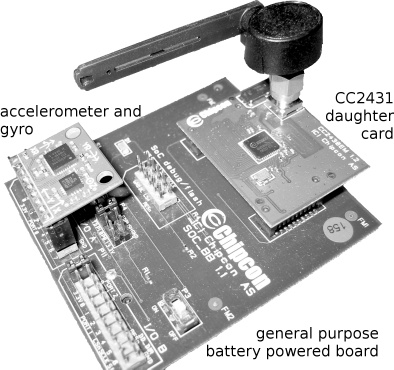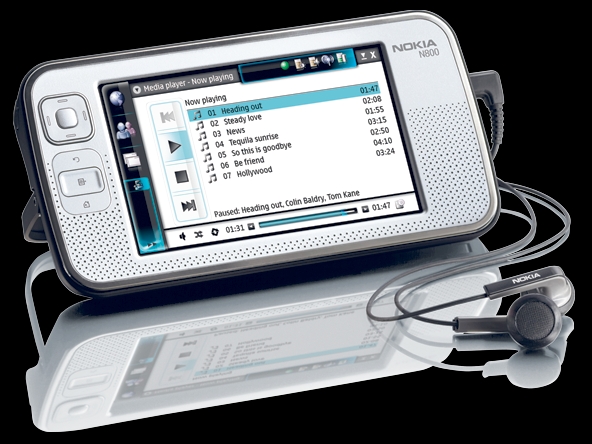
The sensor system looks very straightforward. Each sensor should use a microcontroller, a simple radio, and an accelerometer, preferably three-axis. When we were introduced to the CC2431, it looked like an ideal solution, because it had almost everything needed already in it. It's tolerant of a wide range of voltages and so could be run directly off a battery, contains an ADC, and contains its own integrated ZigBee radio. All we had to add would be the accelerometer.


The 5-axis accelerometer/gyroscope (``IMU'', Inertial Measurement Unit) board from SparkFun Electronics contains an Analog Devices ADXL330M and an InverSense IDG300. The ADXL330M measures ±3.6g on all 3 axes, and is configured to give a 50Hz bandwidth. The IDG300 measures ±500°/s about the two axes not normal to the chip, and has a 140Hz bandwidth. A commercial board was used here for ease of development - we have since developed much smaller wearable sensors of this sort under other projects in the Responsive Environments Group, such as Spinner and SportSemble.

Nokia's N800 is a small portable computer (measuring 2.95 x 5.66 x 0.51 inches, weighing 7.26 ounces). It includes bluetooth, 802.11g, an ARM11 processor, a dedicated DSP, and runs the Linux-based Maemo internet tablet software suite. It shares general features with similar handheld computing devices, so the exact choice of platform is flexible.